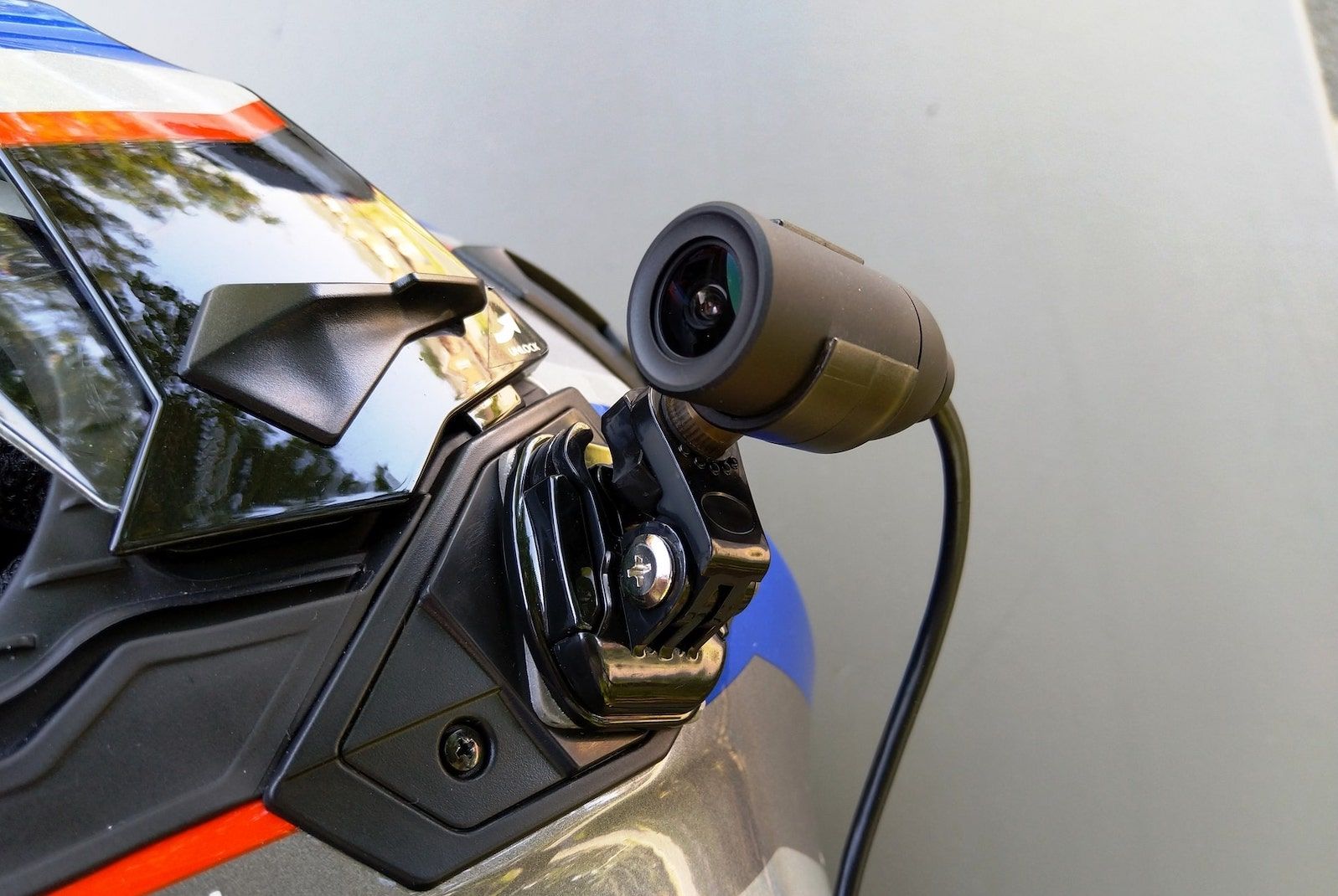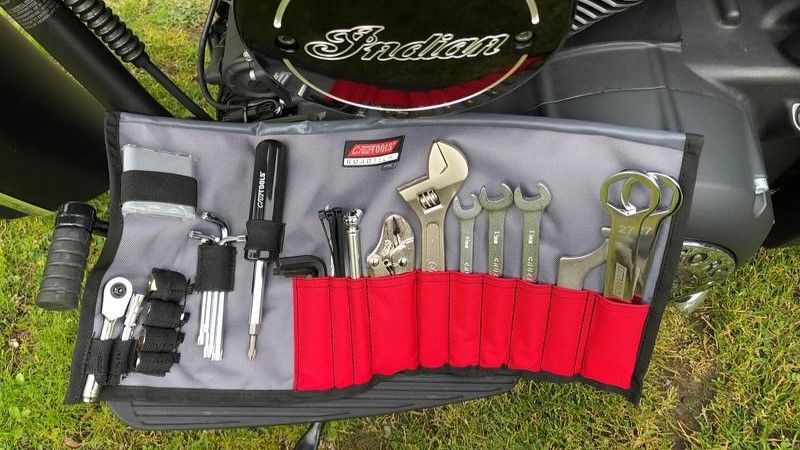Concept vehicles don’t come much crazier than the Dodge Tomahawk, a four-wheeled ‘motorcycle’ powered by an 8.3-liter V-10 engine from a Dodge Viper. The Dodge Tomahawk’s top speed was rated at 420 mph, but no one ever was foolish enough to try it out. Had someone tried it, it could’ve been the fastest motorcycle in the world. Only one was built by Dodge, but nine others were constructed by Neiman Marcus and sold for $550,000 each!
The Dodge Tomahawk was unveiled in 2003 as a one-off concept vehicle. It was designed by Chrysler Group employees Bob Schroeder and Dave Chyz. While it gained massive publicity for the Chrysler Group, it was never intended for production. However, nine replicas were built by Neiman Marcus and sold to enthusiasts. Here are 15 must-know facts about the Dodge Tomahawk:
Is The Dodge Tomahawk A Car Or A Motorcycle?
The Dodge Tomahawk has a car engine and four wheels, but it has the design and styling of a motorcycle. It is considered a motorcycle because it has one seat, two-foot pedals, handlebars, and handbrakes, which are all defining characteristics of a motorcycle.
Dodge Tomahawk Had A Truly Unique Suspension System
The Dodge Tomahawk featured a unique suspension system to accommodate its four wheels. It used independent suspension on both the front and rear, allowing a 45-degree lean in either direction without lifting any tires off the ground. This ensured that all four tires remained in contact with the surface during cornering.
Dodge Tomahawk Wasn’t Road Legal
Due to its status as a concept vehicle, the Dodge Tomahawk was not road legal and did not undergo street-use testing or conform to regulations. Even the replicas sold by Neiman Marcus were not street legal. The bikes were marketed as “rolling sculptures,” but buyers would have to make modifications to make them road legal.
Dodge Claimed the Top Speed Of The Tomahawk Was 420 MPH
The Dodge Tomahawk was claimed to have a top speed of 420 mph, based on the horsepower of the Dodge Viper engine. However, the motorcycle was never officially tested on the track to verify this top speed.
Tomahawk Had A Racing Transmission To Handle The Excessive Torque
To handle the torque and power of the V-10 engine, the Dodge Tomahawk featured a foot-shifted, two-speed aluminum-cased sequential racing-style transmission. The clutch was activated by a hand lever, and the rear tires were driven by a chain.
Tomahawk Had Upgraded Brakes To Stop The Excessive Power
The Dodge Tomahawk was equipped with 20-inch stainless steel disc brake rotors, one per wheel. The front and rear brakes had two four-piston calipers each, for a total of 16 pistons. The braking system was designed to effectively stop the powerful motorcycle.
The Dodge Tomahawk Was Only Produced For Four Years
While Dodge only built one concept vehicle, Neiman Marcus produced nine replicas of the Dodge Tomahawk between 2003 and 2006. These replicas were sold for $550,000 each and were built due to demand and positive response after the concept vehicle’s unveiling in 2003.
No One Ever Published A Road Test
As the Dodge Tomahawk was not road legal, no publication or media outlet was able to conduct a road test. Therefore, the top speed and practicality of the vehicle remain unknown, as it was never officially tested on the track.
Dodge Built The Tomahawk To Make A Point
The Dodge Tomahawk was built as a concept vehicle to showcase the engineering and technical capabilities of the Chrysler Group. It was designed to create interest and demonstrate the company’s ambition and innovation in the automotive industry. The Tomahawk represented Dodge’s willingness to take risks and think outside the box.
The Dodge V-10 Engine Was Unveiled In 1992
The Dodge V-10 engine, powering the Tomahawk, was first unveiled in 1992. It initially featured a displacement of 7,990cc and produced 400 horsepower. The engine was later upgraded to produce over 500 horsepower in its third generation.
The Engineering For The Dodge Tomahawk Was Pretty Wild
The engineering behind the Dodge Tomahawk was impressive and unique. To keep the bike low, the engine was changed to dry sump lubrication, and the cooling radiators were placed in the “V” of the engine. The bike featured innovative swing arms, hub-center steering, and rim-mounted disc brake rotors. The rear suspension could be locked, allowing the Tomahawk to stand independently without a side stand.
The Tomahawk Chassis Components Were Milled From Billet Aluminum
The main chassis components of the Tomahawk were milled from billet aluminum. Starting from massive 750-pound billets, they were machined down to just 25 pounds each, resulting in lightweight yet strong components to support the V-10 engine.
The Dodge Tomahawk Is Enormous
The Dodge Tomahawk weighs approximately 1,500 pounds, making it significantly heavier than traditional motorcycles. The weight is necessary to provide stability and keep the powerful V-10 engine grounded.
The Press Reaction Was Critical
The initial press reaction to the Dodge Tomahawk was critical, with some considering it a wild and outrageous concept. The Tomahawk received mixed reviews, with critics questioning its design and purpose. However, the public’s reaction was more positive, expressing awe and interest in the unique motorcycle concept.
The “Wow” And The “Why” Of The Tomahawk
The Dodge Tomahawk garnered both “Wow” and “Why” reactions from the public. While many were amazed by its design and performance capabilities, others questioned the practicality and necessity of such a vehicle. Ultimately, Dodge created the Tomahawk as an expression of their engineering prowess and a showcase of their innovative spirit.



















